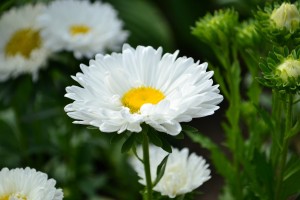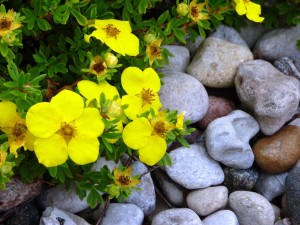1. Nurturing Environment
 Good soil preparation is absolutely the most important thing you can do for your flowers. Loosen soil to at least 5 inches, add organic matter (such as peat moss, compost, or manure), and mix well. Rake to level. Soil preparation can be a fun job, one that increases the anticipation of new life, much like preparing the nursery for a new baby.
Good soil preparation is absolutely the most important thing you can do for your flowers. Loosen soil to at least 5 inches, add organic matter (such as peat moss, compost, or manure), and mix well. Rake to level. Soil preparation can be a fun job, one that increases the anticipation of new life, much like preparing the nursery for a new baby.
2. Light Soil Cover
Most flower seeds should be barely covered; make the soil layer just quarter of an inch thick. Planting flower seeds too deep is a common mistake – as a new parent puts too many blankets on a new born. Seed depth and planting time, critical to emerging new life, are cases where you should refer to expert advice. Read the seed packet; then read it again. The information on the seed packet is like words of advice from a pediatrician or the pages of Dr. Spock.
3. Give your Baby Plants Mother Bear Protection
Once the seeds sprout, they are at the vulnerable seedling or toddler stage. At this point, it’s your duty to keep them from harm. Keep the soil moist, but avoid the temptation to fertilize until the time you see two true leaves. Fertilizing newly sprouted seeds is like trying to feed a pork chop to a newborn: It doesn’t go down well and could be harmful. While waiting for the first set of true leaves is like waiting for an infant to grow teeth, it’s the developmental milestone that signals it’s time for a change in diet.
4. Deadhead Plants to Keep them Feeling Young
 Once plants blossom, keep the color coming by deadheading, or removing faded flower heads. If your flowering plant blooms and then fades, you can always try to revitalize it by shearing off the faded blooms and one-third of the top growth. Now fertilize. Offer support as plants mature and grow tall.
Once plants blossom, keep the color coming by deadheading, or removing faded flower heads. If your flowering plant blooms and then fades, you can always try to revitalize it by shearing off the faded blooms and one-third of the top growth. Now fertilize. Offer support as plants mature and grow tall.
Consider some additional support as seedlings turn into gangly adolescent plants. Now is the time to offer forked twigs or other props before plants endure the rainstorms of life. You can also choose to pinch out the center of young flowering plants, such as petunias and fuchsias, to encourage more bushy side growth. Tall delphiniums, sunflowers, and dahlias may need to be tied to stakes.
5. The Child Analogy
It’s not necessary that great flower gardens need to be formed by planting the seed yourself. It is not necessary to pick up what appears to be the most beautiful. Nurturing is parenting; no matter how unattractive your ward is. It is in fact, your ward and hence irreplaceable. There is nothing in the world that you could be drawn to more!
Was this informative? Read related articles at Nourish The Planet! You can also subscribe to our blog and leave your feedback!
Watch Replay of Webinar Huddle with Dr. Wayne Dorband of the Center for Ecolonomic Excellence and Development.
Source: Nourish The Planet



